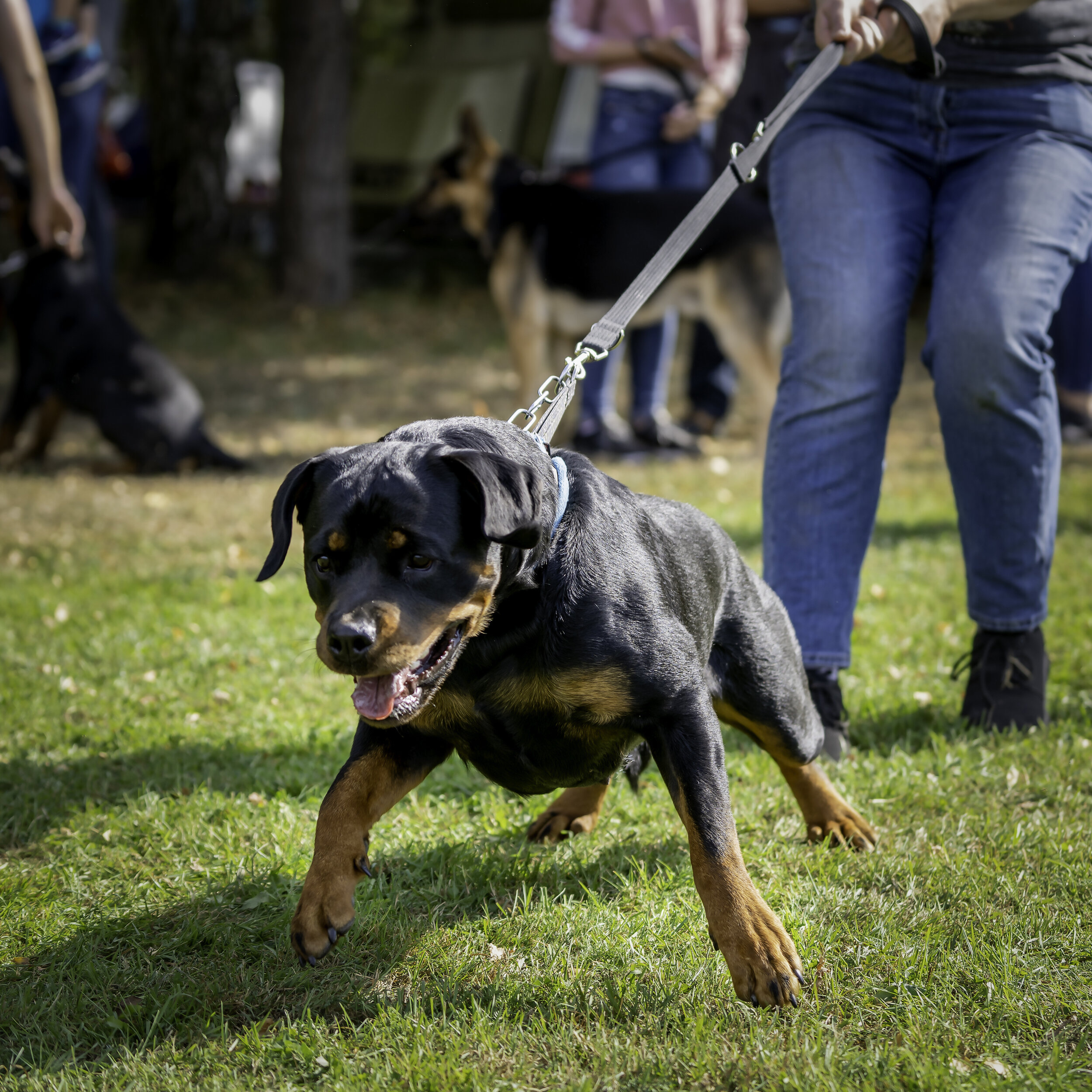How to Get My Dog to Stop Pulling the Leash!
There is no magic tool
There is no magic product that will automatically stop your dog from pulling. My dog, Reginald, used to pull like a freight train until he tired out. Then when he saw a dog, the fatigue took a backseat and we were off to the races again! I tried all kinds of tools, many of which were recommended to me by trainers who just didn’t know any better way to get Reggie’s attention. Tools recommended for this issue often include:
Gentle Leaders
Haltis
Harnesses
Front Clip Harnesses
Prong Collars
Choke Collars
Reggie tried most of these things! But to little or no avail, and that’s because tools in and of themselves aren’t magic. You can’t expect a product by itself to help your dog. You have to teach it. Some of these tools, like the gentle leader, made walking him a little more manageable as it took away some of his power, but they didn’t fix the issue and the gentle leader even wore his nose raw. He still has the scar!
Opposition reflex
If you want something bad enough, and someone tries to hold you back, what do you do? You pull harder to get to it! Well what if they hold even harder? Well often you are committed at that point and pull harder still! The same is true for your dog! If he or she wants to go somewhere, and you hold them back, what do they do? They pull harder! Then after they drag you to the smell, or dog, or person, or squirrel they wanted to get to, they learned that pulling harder worked! They were reinforced for upping their game of pulling against you! In many dog training sports, this is a tool used to increase drive and commitment in dogs! Trainers training dogs for these things want to pull against the dog, and they want the dog to pull back, and they want the dog to win! This creates confidence in the right settings to go bite a bad guy or to find that lost person! Most pet dog owners don’t want this though, and just want their dog to pay attention to them while out on their walk, so we don’t want to reinforce opposition reflex, at least in that setting. Pulling cannot work for your dog. They can’t get what they want by trying harder or it will get worse quickly! (unless of course you are training your dog to pull).
You have to teach!
If you spend time teaching your dog a form of communication whether it’s just the leash and flat collar or if it’s with any of the tools listed above, you can use that language to help them learn not to pull and how to pay attention to you! But you have to spend time teaching them what to do with it first. My favorite tool to teach a dog how to follow the leash is the prong collar. The prong collar offers more clarity in communication than just a flat collar as it evenly spreads pressure around the neck instead of just the position opposite the leash. It gives the ability to teach your dog how to follow very light and finessed leash pressure with much more clarity than just pulling on a normal flat collar, but it isn’t magic and won’t work without teaching. You have to spend a few days teaching your dog how to follow that light pressure on the leash and then reward them every time they give in with food or praise! You also have to be certain that you’re not applying pressure to the leash if you aren’t meaning to communicate with your dog. It becomes very difficult for them to understand what that leash pressure means if the pressure is on for no reason while you sit and talk to your friend. You also have to be certain than when you do apply that pressure, you get a change in your dog’s behavior. Otherwise, the communication becomes white noise and easily ignored by your pup. So if you ask them to turn right, you need to be sure they actually do turn right. Finally, pulling straight back on the leash not only more readily creates that opposition reflex, but it’s harder for your pup to understand. So as you are working with them at letting go of what they want to focus on and following the leash to you, try keeping that leash pressure to the sides at angles. It’s far easier to turn their head away and far easier for them to understand that communication if it comes from the side!
Fixing leash-pulling, is often quite easy once a system of communication is set up and your pup understands what you’re asking and how to pay attention to you. But once those things are accomplished, you can do far more with your dog than just fixing the pulling! Once you learn how to connect with your dog, what you can accomplish becomes limitless! Let me know if I can help!













